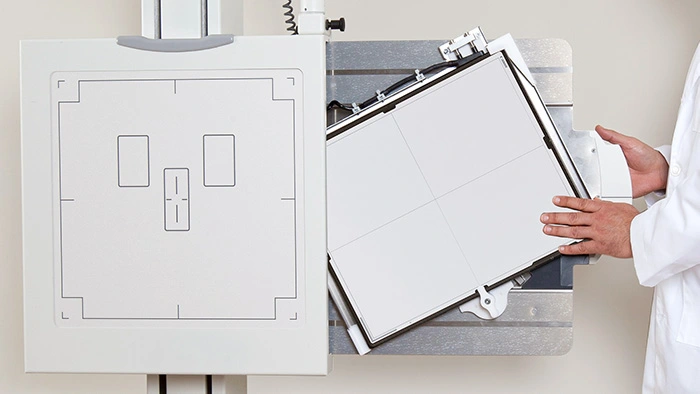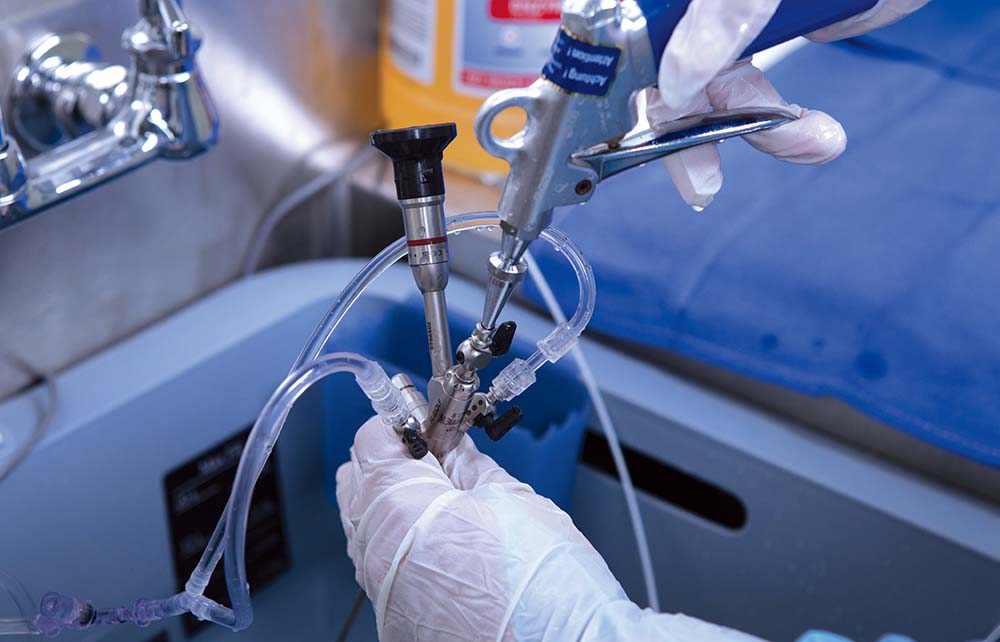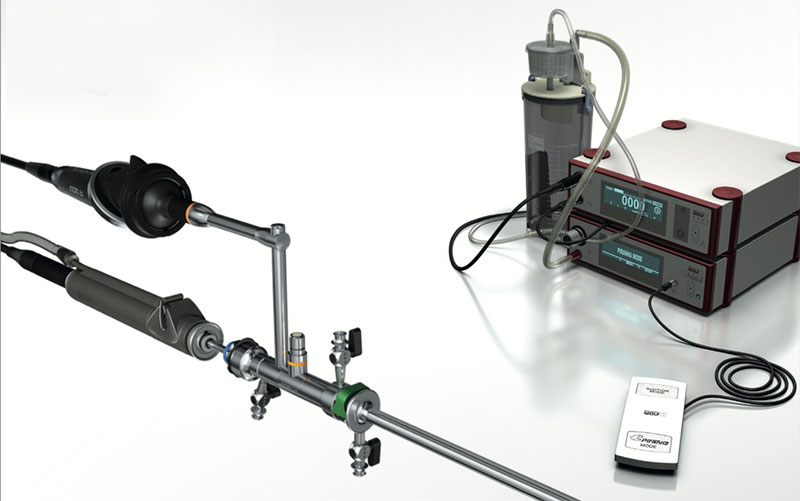What is flat panel detector FPD?
Flat Panel Detectors (FPDs) are sophisticated digital imaging systems commonly used in radiography to acquire fine X-ray images. Unlike conventional film or computed radiography (CR) systems, an FPD acquires X-rays directly as digital signals, enabling real-time image viewing, disease diagnosis, and workflow. They are an integral part of digital radiography (DR) systems and are gaining popularity due to their image quality, speed, and reliability.
Types of Flat Panel Detectors
Mainly, FPDs are classified according to their conversion method:
Indirect Conversion FPDs
They consist of scintillators (e.g., CsI or Gd₂O₂S) that transform the photons of the X-rays into visible photons that are subsequently transformed into electricity by photodiodes (usually of the amorphous silicon type).
Direct Conversion FPDs
These detectors can directly convert X-ray photons into electrical charges (and not via light first and then electrical) by using materials such as amorphous selenium (a-Se), yielding superior spatial resolution.
Portable Wireless FPDs
In emergency, bedside, and field applications, the lightweight, portable detectors can provide flexibility and speed up patient throughput.
Application of Flat Panel Detectors
FPDs are common in clinical and veterinary practice and are of:
X-ray examination (chest/abdominal/bones)
Orthopedics
Dental imaging
Mobile and bedside X-rays
Veterinary diagnostics
Good for spine, OR, pain therapy, radiological orthopedic imaging
IR and fluoroscopy
Their ease of use and compatibility with other systems have helped them become the keystone of modern digital imaging.
How does a Flat Panel Detector work in Radiography?
Flat Panel Detectors work by changing incoming X-ray energy into digital signals. Here’s a basic breakdown:
The X-rays travel through the patient.
X-rays are absorbed in a scintillator or direct conversion layer and converted to light or charges, respectively.
The resulting signal is read out with photodiodes or a sensor array.
Electric signals are sent via thin-film transistors (TFTs) to a digital processor.
The resulting digital image is brought up onto the workstation for analysis.
And that process is virtually instant—you get good images in just a few seconds.
Difference between Flat Panel Detectors and Image Intensifiers
| Feature | Flat panel detector | Image Intensifier |
| Image Quality | High resolution, distortion-free | Prone to geometric distortion |
| Size&Weight | Compact and lightweight | Bulky and heavy |
| Durability | More robust, fewer moving parts | Sensitive to shock |
| Digital Workflow | Fully digital | Requires analog-to-digital conversion |
| Radiation Dose | Generally lower | May require higher doses |
| Field of View/FOV | Variable, adjustable | Fixed circular field |
FPDs offer superior performance, making them the preferred choice for new-generation imaging systems
Conclusion
Flat panel Detectors (FPDs) have made a tremendous difference in radiographic imaging, providing fast, accurate, and high-resolution digital imaging of X-ray images. From general radiography to surgical imaging to veterinary applications, FPDs remain an enabling technology in medical diagnosis.
In my next post, we’ll walk through the process of finding the right flat panel detector for your specific clinical needs, considering the detector size, pixel pitch, scintillator material, and mobility requirements.



